How To Build An Online Store In 1 Day
If you’re trying to run a successful business, the worst thing you can do is leave money on the table.
And let’s get this out of the way: pretending ecommerce doesn’t exist is the easiest way to miss out on potential earnings in this digital-first landscape.
At this point, you’ve probably heard all about how profitable the ecommerce space has become.
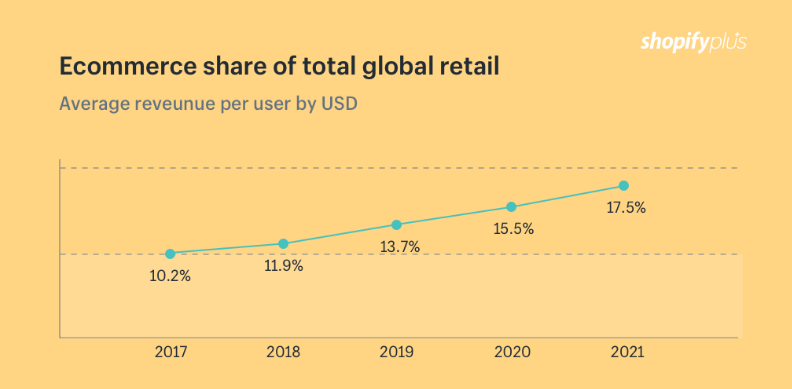
I’m willing to bet it’s the reason you’ve finally decided to build an ecommerce website.
Which is great! Except there’s just one problem.
If you’re like most people, the idea of learning how to build an online store from scratch is pretty overwhelming, especially if this is your first time.
But with global ecommerce markets estimated to reach $4 trillion by 2020, you simply can’t afford to ignore ecommerce.
So today, we’re going to walk you through starting your first ecommerce website, step-by-step.
And we’re not just going to break down how to get it off the ground. By the time we’re done here, you’ll be armed with the tools and knowledge necessary to optimize your store.
But let’s not get too ahead of ourselves.
Instead, let’s dive into the first, and arguably most important step to building an ecommerce website: setting tangible goals before you post a single product.

Step 1: Brainstorm and establish actionable, realistic goals
I know, I know.
People read “brainstorm and set goals” as the first step of any article and immediately skip ahead.
But make no mistake, this isn’t a suggestion. If you rush this step or just go through the motions, you’re going to end up with a pretty inefficient ecommerce store.
If you’re running a brick-and-mortar small business, you’re already going to be ahead of the game here.
For those of you who are just trying to start learning how to build an online store, listen up.
Your ability to both set goals and properly select the right product/products to sell will be the difference between surviving and thriving in the ecommerce space.
First, let’s address the concept of goals.
Why? Because like an archer, you can’t expect to hit your target if you don’t know what you’re aiming at.
Properly creating goals comes down to making sure they work within the context of your store’s capabilities.
Or to put it simply: your goals need to be realistic.
Of course, this brings us to an important question. How can you know your goals are realistic when this is your first time starting an ecommerce business?
My advice would be to consider the industry averages.

For example, the average ecommerce conversion rate is anywhere from 1-4%, depending on where you are in the world and where most of your market is located.
So with that in mind, and considering that this will be your first venture into the world of ecommerce, an average conversion rate goal of 1-2% is both realistic and tangible.
Plus, clearly established goals give you the data necessary to continually improve your site over time.
From a short-term perspective, goals give you a clear indicator of the success of your strategies.
And from a long-term perspective, you’ll have access to metrics that will ensure you can course correct your approach as needed.
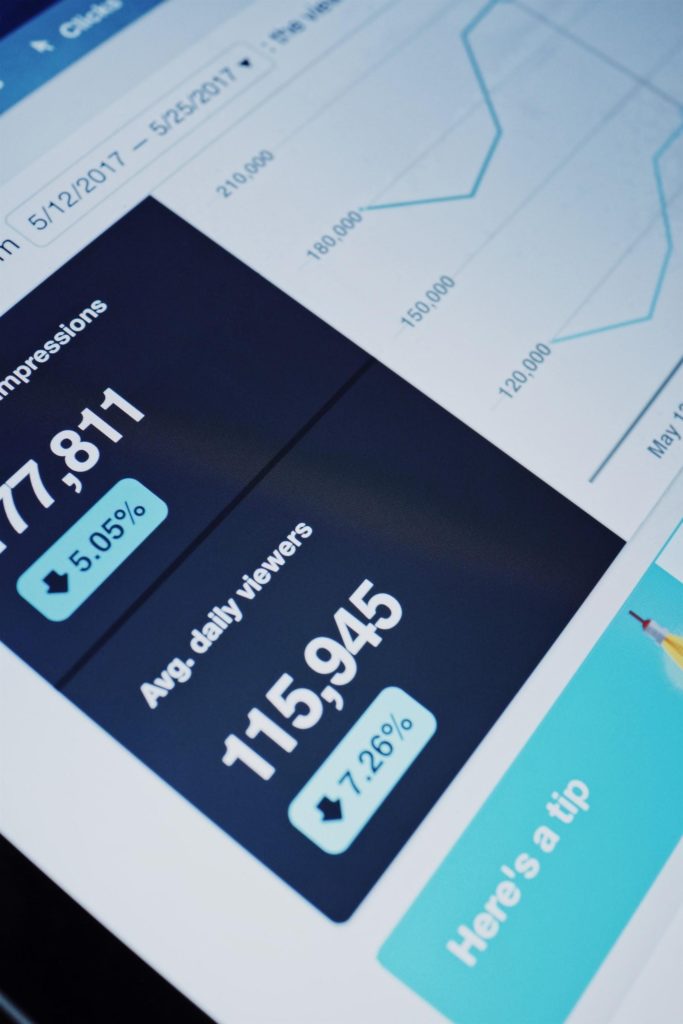
Step 2: Decide on your product
When it comes to creating an ecommerce store, determining what you’re going to sell is a pretty critical decision.
Why? Because all the marketing and design know-how in the world won’t save a product that people simply aren’t interested in.
So, before you choose what your ecommerce site will sell, you’ll definitely want to do the proper research.
At this point, I’m sure some of you are asking, “okay, but what does that research process even look like?”
Not to worry, we’re going to analyze a few different approaches you can use to identify the perfect products for your ecommerce business.
Focus on your interests
If you’re looking for the most intuitive method to product selection, relying on your own experience and interests is going to be your best bet.
If you’re a hiking fanatic like the people at CleverHiker, learning how to build an online store around hiking supplies would be a no-brainer.
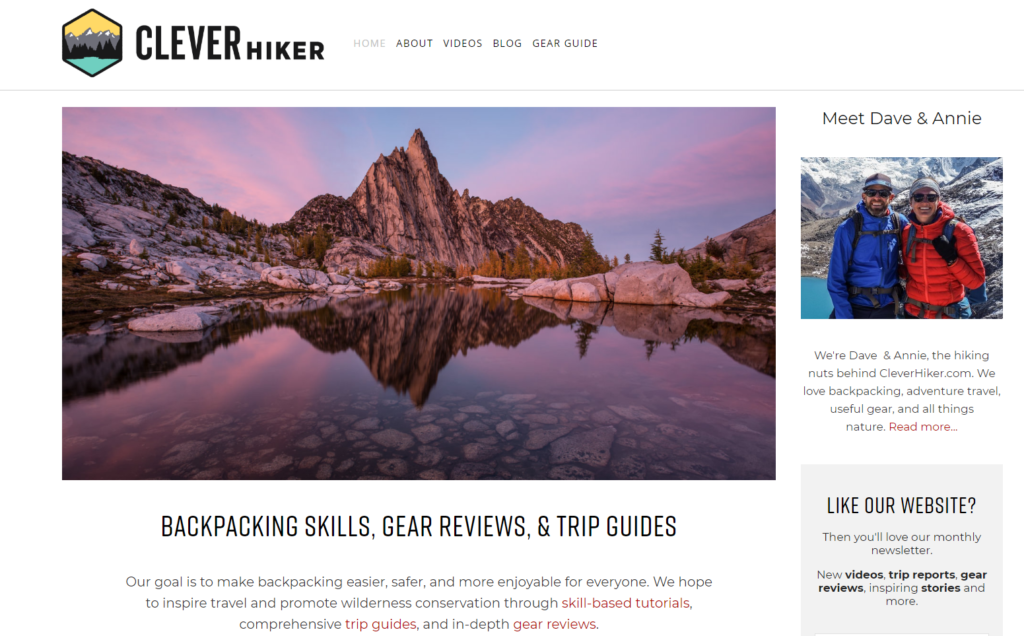
Why? Well, let’s just ignore the fact that you might actually believe in the products you’re selling.
What really elevates this method is the content and marketing opportunities it presents you with as you develop your store.
When you’re just as much of a fanatic as your customers, it gives you a level of insight into your chosen industry that most ecommerce stores can only dream of.
Whether you’re a hiker, artist, or master chef, your passion is going to help drive innovation within your ecommerce store.

Sure, it’s great that you understand the key principles of the industry. But more importantly, you also understand the customer pain points on an intimate level.
Speaking of pain points…
Consider customer pain points
If you’re really struggling to come up with a niche, there’s nothing wrong with following the classic “solve a problem” method, independent of your personal interests.
But if you want to solve a meaningful problem, you’ll need to identify and consider the major customer pain points in a particular industry.
For the sake of simplicity, we’ll view pain points as one of two things:
- General industry issues that haven’t been addressed properly
- Issues with particular products within the industry
From there, it’s as simple as identifying the highest demand for a solution and building an ecommerce website around it.
But you’re not done yet.
Once you’ve decided on the product/products you’ll be providing, you’ll need to determine what you should charge for this product.
Pricing simplified
We could spend an entire article discussing the challenges of pricing, but in the interest of getting your store running as soon as possible, let’s stick to the basics.
Start by calculating your costs, which typically includes (but isn’t limited to):
- Cost of materials
- Shipping
- Marketing costs
- Taxes
- Site maintenance fees
- Processing fees
Make sure to maintain your proportions accordingly. Once you’ve taken everything into account, simply add in what you’d like to make for a profit and just like that, you’ve got your price.
Easy enough, right?
Before you finalize your purchase price, make sure to check out your competitor’s prices and ensure they’re within a reasonable range.
My advice? Resist the urge to jump into a full-on pricing war with everyone. If your price is too low, you’ll most likely just end up losing money in the process.

Step 3: Pick your ecommerce web hosting
Now that we’ve established a strong foundation for your store, it’s time to get into actually creating it.
If you’re looking to get into the world of ecommerce, you’re essentially going to have two options.
Your first choice is to rely on a marketplace like Amazon.
While using a marketplace certainly has its perks, there’s one major drawback to consider.
If you don’t take the time to build your own ecommerce website, you’re at the mercy of the marketplace you’ve chosen.
So, if you want to be fully autonomous, you’re going to end up building your own website. And to do that, you’ll have to choose the right web hosting platform.
There are a few different options here, with companies like HostGator and GoDaddy being among the most popular.

Of course, there’s always the secret third option of using a more advanced ecommerce platform like Shopify, if you’re looking for access to premium ecommerce-specific features.
These ecommerce platforms make both managing and navigating your ecommerce site incredibly intuitive, and are absolutely worth looking into (if you’ve got the budget for them).

Step 4: Choose your domain name
Okay, I’ll admit it. Choosing a domain name is probably the least interesting aspect of building an ecommerce site.
There, I said it.
But the reality of the situation is that you’re going to be stuck with this domain name indefinitely, especially if your brand starts to take off.
With that in mind, let’s cover some of the tips and tricks you’ll need to make sure you pick the perfect domain name.
Right off the bat, always choose the “.com” option.
Is it more expensive? Yes, no question.
But is it worth it? Absolutely.
Trust me, you don’t want to end up with a “.online” or a “.site” on your brand new ecommerce store.
Don’t try too hard to be clever (replacing ‘for you’ with ‘4U’). The simpler it is, the easier it is to remember.
If you really want to get fancy, you can do some keyword research and choose a domain name that search engines like Google will love.

Step 5: Build the actual ecommerce website
At this point, you finally have a website!
Unfortunately, it’s a barren wasteland.
If you’ve chosen ecommerce-focused platforms like Shopify and Squarespace, adding content to your site will be pretty straightforward.
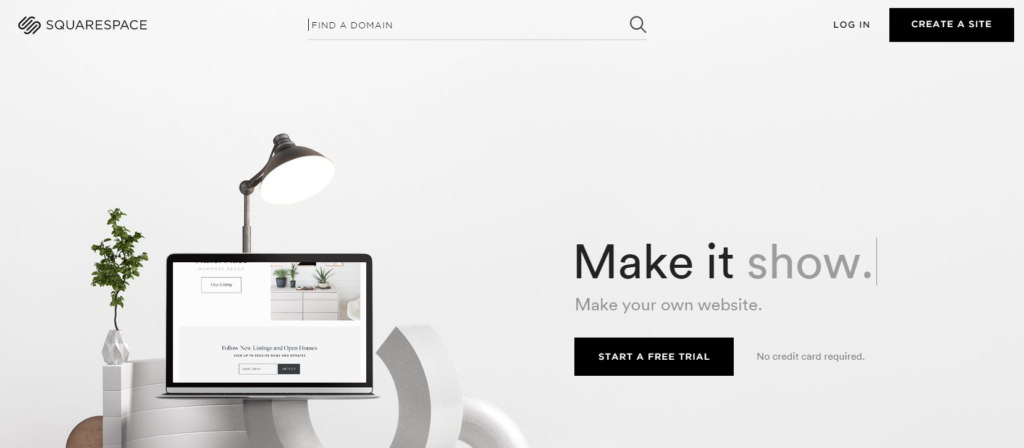
If you went the more traditional route, you’ll need to spend a bit more time building up the site.
And to be clear, this about more than just posting your products online. Once you’ve posted the products, you’ll want to add website copy describing them and encouraging visitors to buy.
But that’s just the tip of the iceberg.
You want to add layers and depth to your page, to reassure both website visitors and Google’s algorithm that your ecommerce store is credible.
That means adding in:
- A home page where you showcase the latest deals and sales
- A contact us page to ensure customers have a way to stay in touch with you
- A blog section where you post content like relevant industry news and how-to articles

Step 6: Establish your merchant account
Once you’ve built a respectable ecommerce website, it’s time to make sure you can actually get paid.
As far as online stores go, a system for receiving credit card payments is a necessity.
Enter the ever-important merchant account.
You have options ranging from massive brands like PayPal to companies that focus on small businesses like PaySimple.
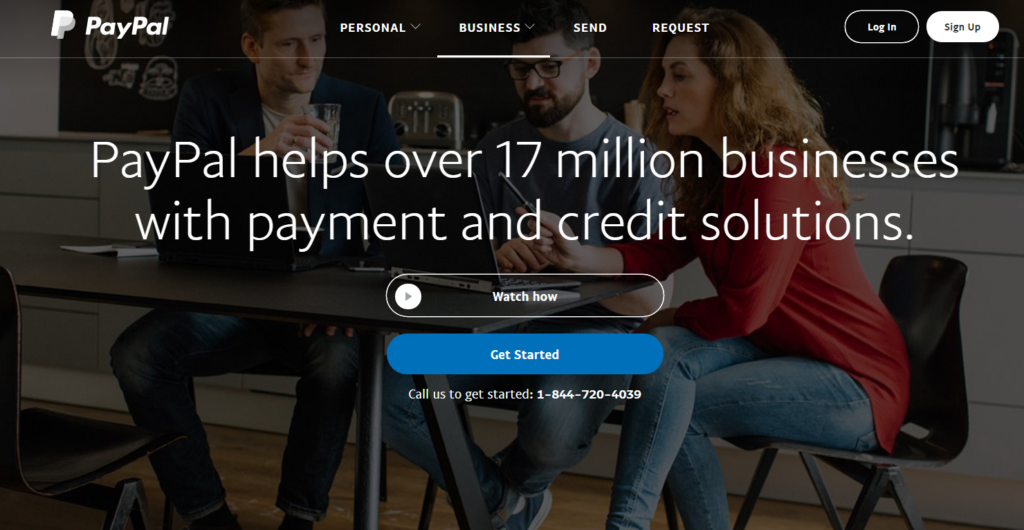
Just to be clear, no matter which option you choose, you’ll still end up having to pay for the service.
But when the name of the game is ‘reduce friction to make purchases easier’, establishing a merchant account is more or less non-negotiable.
Conclusion:
There’s no getting around it: investing this much time and money into a platform you’ve never used before is pretty intimidating.
But if you expect to outshine your competitors, maximize your earnings, or be relevant at all in your industry, establishing an ecommerce store is a great place to start.
Set those realistic goals, then figure out what you’re selling and why.
From there, choose the right ecommerce web hosting service for your particular vision and approach.
Pick a domain name, build the ecommerce site, and breathe life into it with convincing copy and valuable content.
Establish your merchant account to ensure customers have a smooth purchasing experience, and just like that, you’ve built an ecommerce store that’s ready to make you money.
It may not be easy, but if you want a piece of that $4 trillion pie, prioritizing ecommerce is absolutely worth the headache.

